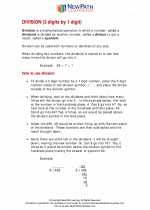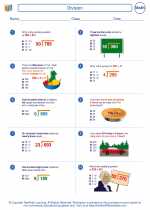Linear Equations
A linear equation is an algebraic equation in which each term is either a constant or the product of a constant and the first power of a variable. The general form of a linear equation in one variable is:
ax + b = 0
Where a and b are constants, and x is the variable. Linear equations can also be written in the form y = mx + b, where m is the slope and b is the y-intercept. In this form, the equation represents a straight line on a graph.
Solving Linear Equations
To solve a linear equation, you can use several methods, such as:
- Substitution: Substitute one expression from the equation into the other, and solve for the variable.
- Elimination: Add or subtract the equations to eliminate one variable, and then solve for the remaining variable.
- Graphing: Plot the equations on a graph and find the point of intersection.
Study Guide
When studying linear equations, it's important to understand the following key concepts:
- Slope-Intercept Form: Understand how to represent a linear equation in the form y = mx + b, where m is the slope and b is the y-intercept.
- Graphing: Practice graphing linear equations on the coordinate plane and understanding the relationship between the equation and its graphical representation.
- Solving Equations: Learn and practice different methods for solving linear equations, including substitution, elimination, and graphing.
- Applications: Understand real-world applications of linear equations, such as calculating costs, determining rates of change, and predicting trends.
By mastering these concepts and practicing solving various linear equations, you can develop a strong understanding of this fundamental algebraic topic.
[Linear Equations] Related Worksheets and Study Guides:
.◂Math Worksheets and Study Guides Sixth Grade. Division
Study Guide Division
Division  Worksheet/Answer key
Worksheet/Answer key Division
Division  Worksheet/Answer key
Worksheet/Answer key Division
Division  Worksheet/Answer key
Worksheet/Answer key Division
Division 

 Worksheet/Answer key
Worksheet/Answer key
 Worksheet/Answer key
Worksheet/Answer key
 Worksheet/Answer key
Worksheet/Answer key

The resources above cover the following skills:
Connections to the Grade 6 Focal Points (NCTM)
Number and Operations: Students' work in dividing fractions shows them that they can express the result of dividing two whole numbers as a fraction (viewed as parts of a whole). Students then extend their work in grade 5 with division of whole numbers to give mixed number and decimal solutions to division problems with whole numbers. They recognize that ratio tables not only derive from rows in the multiplication table but also connect with equivalent fractions. Students distinguish multiplicative comparisons from additive comparisons.